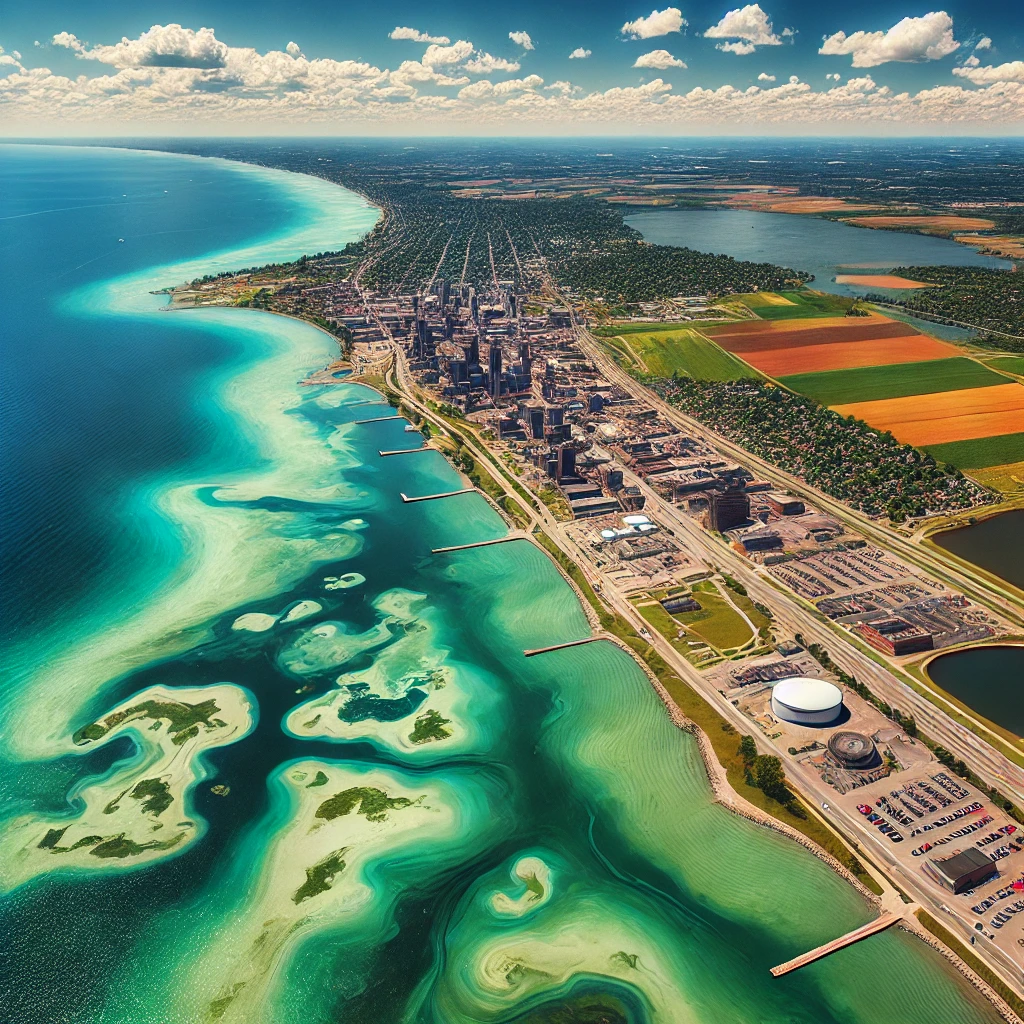Investigating the Health Impacts of Toxic Algae in Lake Erie
About Lake Erie
Lake Erie is the fourth largest of the so-called great lakes of North America, and the only one of the five great lakes that lies south of the Canadian border, the other four advance being the great lakes being Lake Superior, Lake Michigan, Lake Huron, and Lake Ontario. Lake Erie is a big lake ecologically important in the Great Lakes system.
Geographical Location
It should also like Erie is a Binational asset where Canada is on the Northern side while the United states occupies South, west, and east of the lake.
Principal Tributaries
Several major rivers contribute to Lake Erie’s hydrology and ecology, including:
- Detroit River:An important connection from the former to the latter, this river is a major commercial waterway and a biological corridor.
- Huron River: Some rivers flow into the lake; others support aquatic lives and help in water table regulation –Lake Erie.
- Raisin River: Existing in Michigan, it forms an extension to the lake’s convoluted hydrology.
Discharge
Lake Erie to the eastern end to Niagara River and water is discharged through it to the famous Niagara falls. This outlet is one of locks and canals that make up the ST. LAWRENCE SEAWAY through which international shipping takes place through the Great Lakes and into the Atlantic ocean.
Economic Significance
Of all the Great Lakes, Lake Erie is most involved with commerce. The St. Lawrence seaway enhances the flow of export crops like grain, requirement crops like iron ore and coal to feed the industries of not only Canada but also to the United States.
Is the Algae in Lake Erie Toxic?
Indeed, some of the algae that can develop in a lake like Erie is harmful. The principal focus in this valuation is the cyanobacteria Microcystis because it releases a toxin called microcystin. Harmful effects of this toxin include a lethal rate of morbidity and sicknesses influencing the liver in humans and animals that consume contaminated water. These HABs have caused important issues to public health and environmental affairs.
What Is Causing a Problem in Lake Erie?
Excessive Nutrient Runoff
The main culprit of the algal-related problem in Lake Erie is nutrient runoff. Under the influence of fertilizers, phosphorus and nitrogen from agricultural land, urban area, and outmoded wastewater treatment plants, promoting the growth of algae, entered the sea lake.
Human Activities
Industries and urbanization are major sources of runoff that leads to the growth of these dangerous forms of algal blooms.
What Environmental Conditions Could Impact the Growth of Algae in Lake Erie?
Nutrient Levels
Both phosphorus and nitrogen increase algal growth when present in high concentrations. These nutrients flow into the lake mostly from agricultural and urban drainages.
Temperature
The water here is warmer – in the Shallow Western Basin – and these conditions are perfect for algal blooms. This is made worse by increased temperatures around the world.
Rainfall and Runoff
Relatively large volumes of water overflow during flash floods resulting to higher loads of nutrients being conveyed into the lake. These events are on the rise as a result of growing climatic changes.
Climate Change
Global warming results in increase in temperature, changes in precipitation rates and therefore leads to high occurrence and effects of the HABs in Lake Erie.
Conclusion
Indeed, Lake Erie is one of the ecological and economical vital regions of the world. However, power is evident in the rising category of damaging algal blooms as a concern. Reducing nutrient loading, improving the methods of producing and handling food, and preventing effects of climate change are the necessary actions for protecting this important source of fresh water for future generations.
